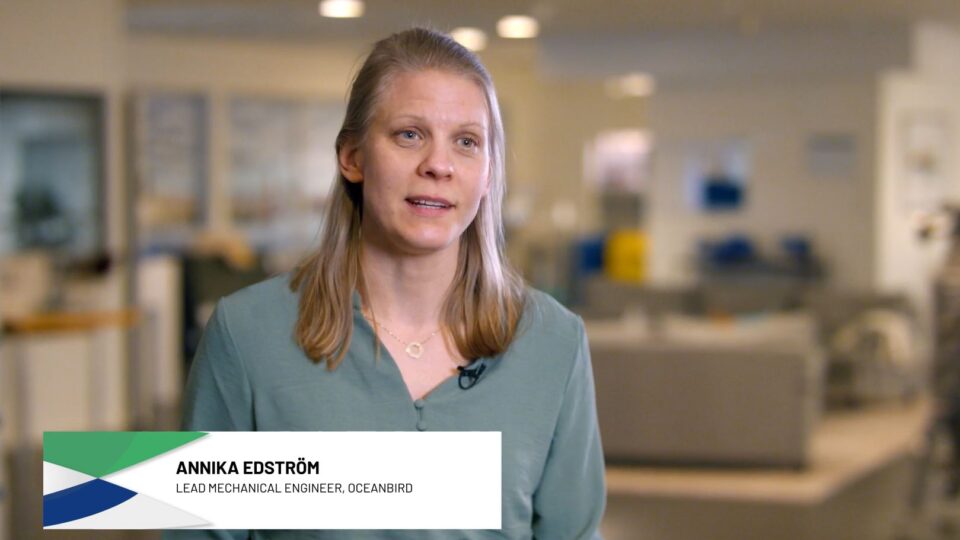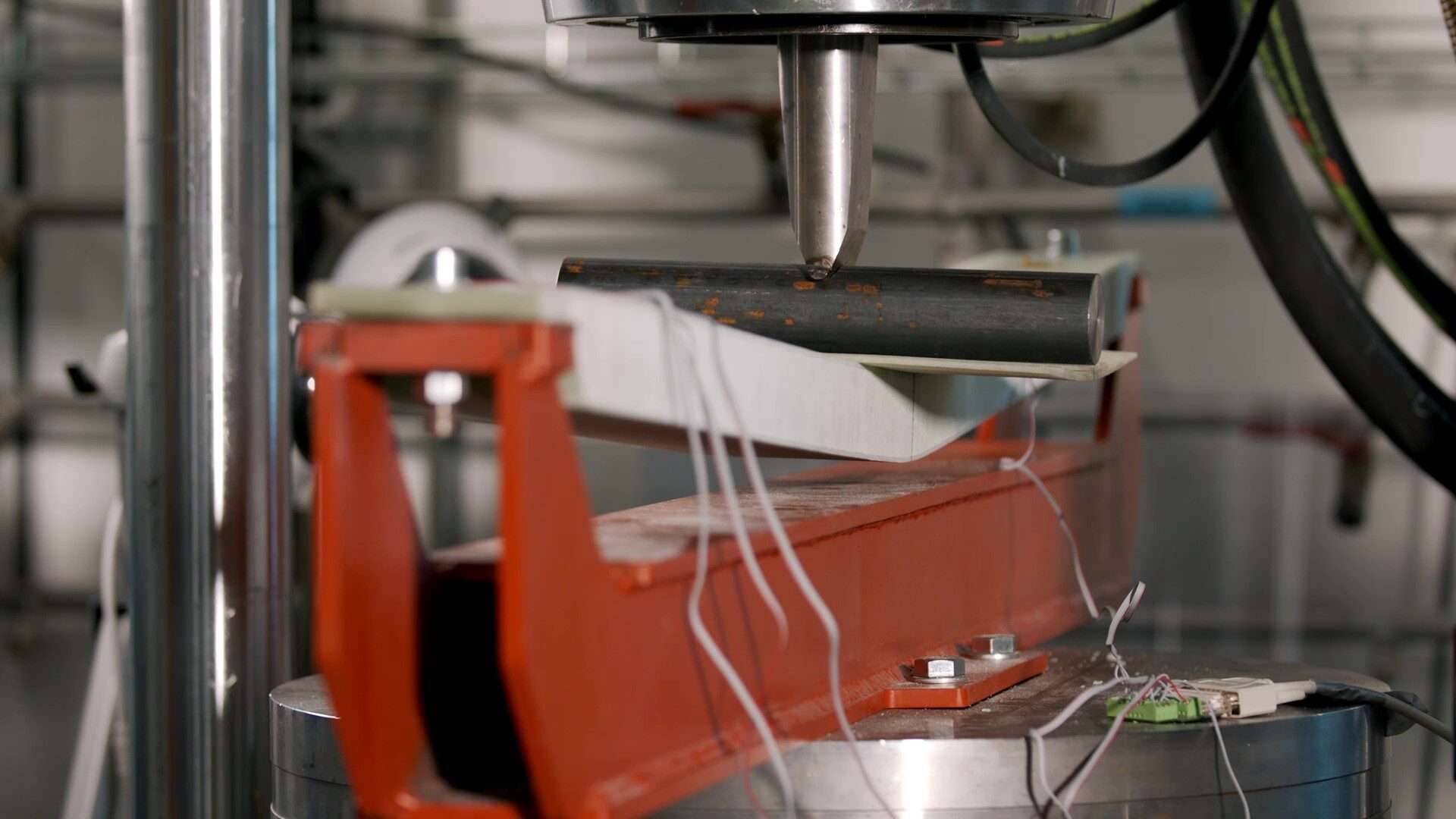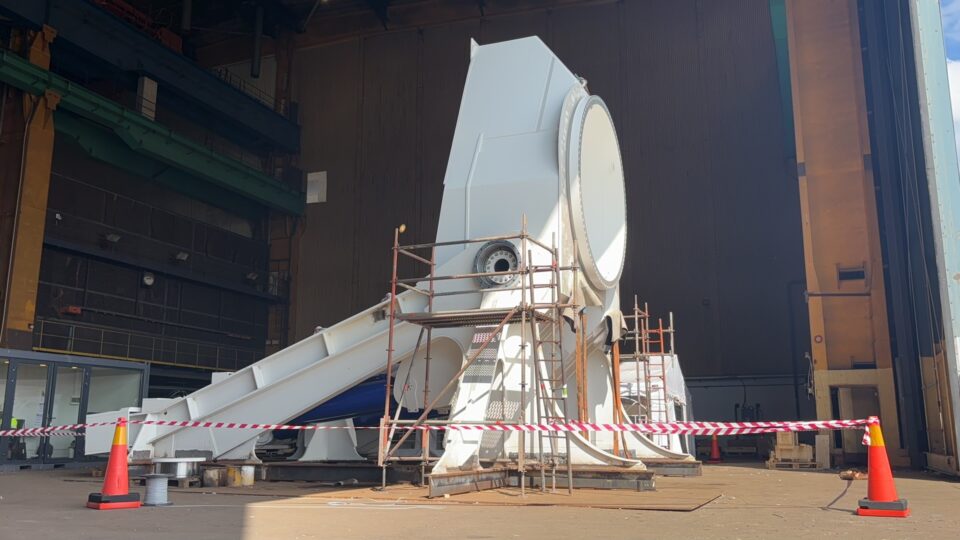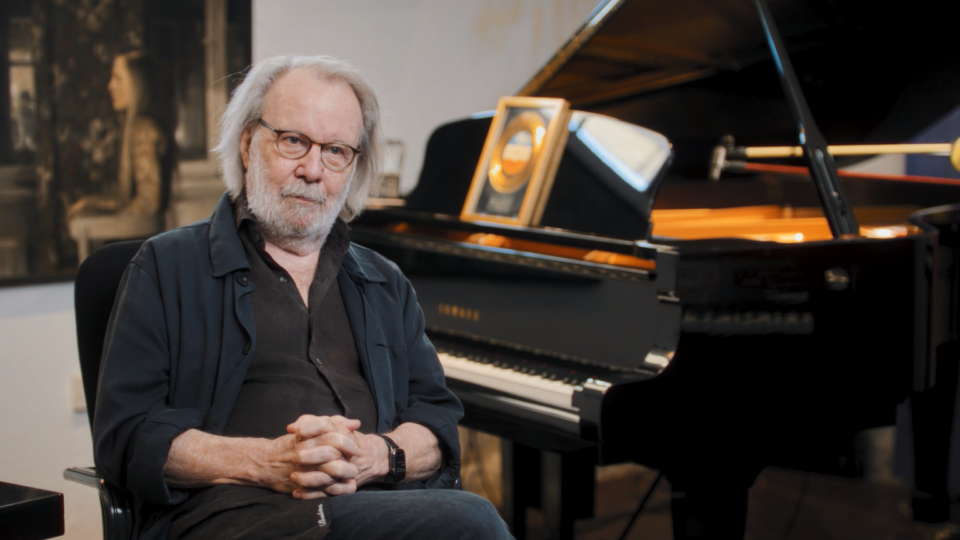The biggest part of Oceanbird Wing consists of composite panels made by recycled pet material, which is covered by a thin layer glass fiber laminate. The mechanical team, led by Annika Edström, tested the panel´s durability by exposing it to extremely high pressure and found ways to reduce weight.
The composite panel breaks with a big bang, and the cracks are carefully examined by Annika Edström, Lead Mechanical Engineer at Oceanbird and consultant Linus Fagerberg, Ph.D. Lightweight Structures & CEO, Lightness. They are in Alfa Laval´s material and chemistry test center to investigate at which loads the composite panel breaks.
“So far, we have mostly verified our material choices and validated our structural calculations. We have also compared different design set-ups to transfer loads from our composite to the rest of our steel structure, which has actually resulted in a more lightweight design” says Annika Edström.

Burn tests to check fibers
The weight of the wing sail contributes to how much emissions that is possible to reduce from the vessel´s operation. The challenge is to make the wing sail robust enough to handle the wind loads at sea, without using too much material and making it heavier than it needs to be. Therefore, the quality of the material is very important. To ensure that all material keep a high standard, Oceanbird does its own testing.
“We do a lot of analysis and testing at Oceanbird”, says Linus Fagerberg. “Besides from this strength test of the sandwich beam and bolted joint, we also do burn tests to make sure that we know how much fibers we have in the face sheets so that it’s not too much matrix and too little fibers.”

Next step: full scale wing
After the results from all these tests are analyzed, it is time for the mechanical team to focus on the first full-scale wing sail prototype in Landskrona. The prototype installation is part of the project Orcelle Horizon, which is supported by EU.

Framework program under grant no 101096673.
“When we are sure that we have done the right assumptions based on the knowledge that we have at the moment, we can move ahead to the detail design phase of our land-based prototype. It is going to be an exciting year” says Annika Edström.




